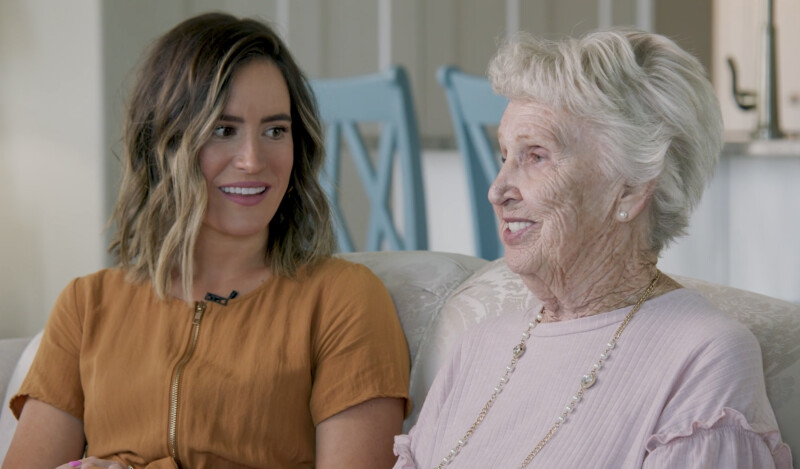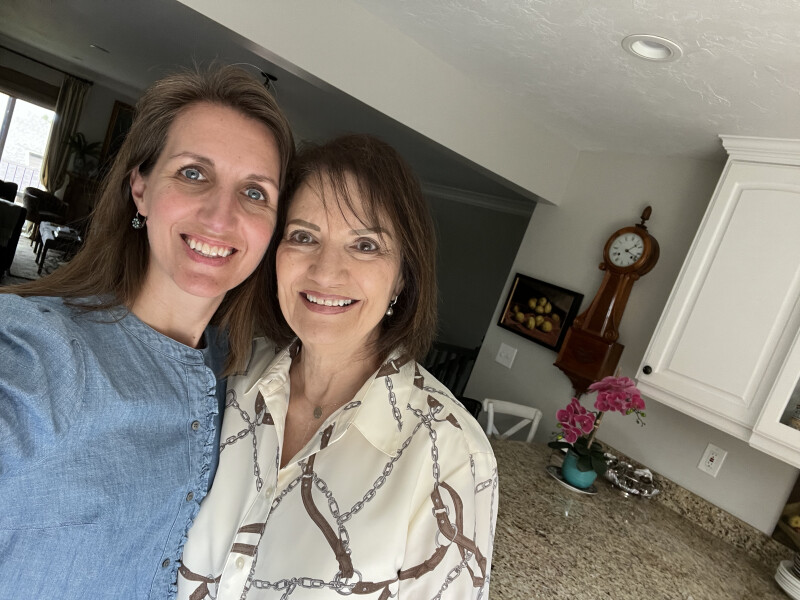While most of her nursing school colleagues were heading to other specialties, Katie Cheesman always knew she wanted to focus on the geriatric field.
Through experiences working with her elderly patients, she learned the power of listening and was inspired to begin filming some of her patient's life stories, with their permission. Katie has since grown passionate about helping others preserve video records of their loved ones for future generations as part of family genealogy records.
“I’ve seen kids and parents connecting throughout the interview, and grandkids and grandparents. I hear things like, ‘I’ve never heard that story before. I had no idea my grandpa felt that way.’ It helps you see that person in a new light and connect with them on a really deep level,” she says.
In her Seek course, Modern Genealogy: Filming Your Loved One’s Life History, Katie shares how simple it is to create a video life story of a loved one. She includes what you need to film, how to prepare, interview tips, how to edit and store your video, and why this work matters.
Part of what makes the process easy is Katie’s questionnaire which helps you capture a life history narrative without feeling overwhelmed.
“The beginning of the questionnaire is a little more basic and just gets them talking and gets the memories going,” she says. “Then by the end you’re laughing and crying and connecting, and it’s just so much fun.” The questionnaire is available for free because Katie hopes to make it more accessible for everyone to add to their family history in this visual way.
I am a producer with Seek courses, and working with Katie was so easy and delightful that I decided to give making my own video a try. I asked my aunt to allow me to film her and then share the outcome. Everything about the experience was enjoyable and easier than expected. (You can see part of my results in the video below at the 2:04 mark.)
Per Katie’s instructions, I came prepared with a tripod for my smartphone, a Lav microphone, my phone, and her questionnaire. We didn’t have a smartphone tripod at home, so I purchased one for this (and future occasions) for $15. We already had a small Lav microphone at home but I needed to get an adapter so it would plug into my phone.
But as Katie explains in her Seek course, you don’t need any special equipment for this, just your phone “with plenty of storage” and the questions are the key items. The microphone and tripod I used are extras to help your video sound and look a little more professional. If you opt not to use the mic and tripod, however, then simply get creative with what you do have for your setup. Then let the special experience of filming begin.
“Any documentation is important, writing down your story is important,” Katie says. “But there is something special about video, to be able to see that person, hear their laugh, see them cry, feel that emotion. It’s really incredible that we have these resources to accomplish that.”
Filming someone's life story and getting it done is better than having the perfect equipment, perfect circumstances, or a perfect final product.

For seating and lighting during filming, Katie recommends making sure your loved one is comfortable, turning off overhead lights, and relying on natural light for your video.
Since I had been to my aunt’s home before, I knew that she had a seating area in her kitchen near a window for a good source of natural light. I asked her to try two different seating arrangements and settled on the one where she faced the window area because it created a softer light on her face without harsh shadows.
Katie’s question list helped my aunt feel comfortable enough to share about her personal life. Even though we only completed part of the questionnaire, we had moments of laughter and tears, just as Katie said we would.
These types of filming experiences have taught Katie invaluable lessons through the years.
“I feel like the world is very loud and people tend to talk over one another, but if we were to just sit across from each other and listen to each other’s stories, I think there would be a lot more empathy, love, and compassion,” she says.
For me, making a video recording of my aunt was a very sweet experience that I’ll cherish, and it helped me get to know her and my maternal heritage in a way I hadn’t had the chance to before.

Katie shares, “Many, many friends of mine have passed away now and the experience of documenting their story has been an honor for me and it has anchored me to them.”
She continues, “There have been many times where I have felt their presence in my life, specifically going through difficult times. I have faith that [part of] their work on the other side is us.”
In Modern Genealogy: Filming Your Loved One’s Life History, Katie explains even more about this video documentation process and includes a delightful how-to section where she shows the filming process with her dear friend, Cleo.
Click on each image below to download and print your own copy of Katie’s Life Story Questionnaire and Spiritual Legacy Questionnaire and then go schedule a time to record your loved one.




